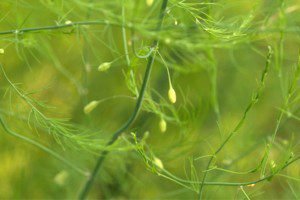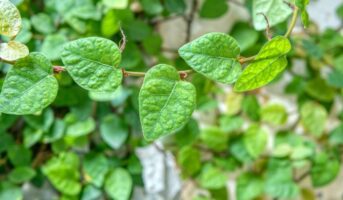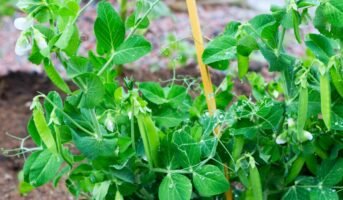One of the few crops that can be grown year-round in a garden is asparagus, which is also one of the first vegetables ready to harvest in the spring. You want to pick a location that has all the growing conditions it needs because it will be there for years. Taking three to five years to fully mature, asparagus plants are a worthwhile investment. You will have asparagus spears to harvest for over a month every spring once they begin to produce well.
The immature, upright asparagus stems with ends that resemble scales are known as asparagus spears. When handling immature shoots, gloves are advised. Female plants sprout deadly red berries in the late summer months. Later in the season, the leaves develop into a light-green, airy fern that turns golden in the fall. Usually, this perennial is planted in the early spring from its roots, or crowns.
See also:
Asparagus tree: Key facts
| Common Name | Asparagus |
| Botanical Name | Asparagus officinalis |
| Family | Asparagaceae |
| Plant Type | Perennial, vegetable |
| Mature Size | 4 ft. tall, 2 ft. wide |
| Sun Exposure | Full sun |
| Soil Type | Sandy, loamy |
| Soil pH | Neutral, acidic |
| Bloom Time | Summer, fall |
| Flower Color | Yellow, green |
| Hardiness Zones | 3-10 (USDA) |
| Native Area | Europe, Africa |
| Toxicity | Berries toxic to humans |
Asparagus plant: characteristics
The plant known as asparagus, or Asparagus officinalis, is a herbaceous perennial in the Asparagaceae family that is cultivated for its edible spears or young shoots. With sturdy stems and feathery foliage, the asparagus plant is tall and has scale-like leaves that emerge from an underground stem or rhizome. Blooming either singly or in pairs, the bell-shaped blooms are. Their colour ranges from yellow to green-white. A spherical red fruit with one to six black seeds develops after flowering. In addition to growing to a height of 100–150 cm (39.4–59.1 in), asparagus can live for 20 years or longer. Europe, northern Africa and western Asia are the regions from which asparagus originates.
They have very little salt and very few calories. In particular, asparagus is a good source of vitamin B6, calcium, magnesium, zinc, rutin, niacin, folic acid, iron, phosphorus, potassium, copper, manganese, selenium, chromium, dietary fibre, and vitamin A, C, E and K.
Asparagus plant: How to grow?
Plant the tiny seeds in the spring or six weeks prior to the last anticipated frost, either inside or in a greenhouse. Plant seeds in trays or punnets 10 mm deep. One seed per cell is typically advised by growers. When the soil is between 23 and 27°C, asparagus will germinate in 14 to 21 days. As the seeds cannot thrive in cold, wet soil, do not overwater the punnets. They prefer drainage, which is good.
Soil PH and fertility for asparagus
A pH level of 6.5 to 7.0 well-drained soils are ideal for asparagus growth; very acidic soils are not tolerated. It may grow in sandy, medium, or heavy soils if they drain properly and don’t retain water after rain.
Asparagus plant: Care tips
Watering
Asparagus roots and ferns require oil wetness for healthy growth. A steady soil moisture content is necessary for asparagus ferns to remain healthy for the following year, even though they rarely show overt signs of drought stress. In particularly dry years, watering during harvest season may also boost yields. It’s recommended to water asparagus patches by at least one inch per week.
Controlling weeds
Taking care of weeds will assist in sustaining a more abundant spear harvest since asparagus and weeds compete for soil nutrients, water, and light. Hand-pulling weeds remains one of the best techniques, particularly in tiny asparagus beds. Additional techniques include covering crops, flame-weeding, timing of hoeing and cautious application of specific herbicides. Since asparagus is a perennial crop seldom tilled or tended, perennial weeds such as quack grass and Canada thistle flourish there. It is easier to control weeds between rows in bigger asparagus gardens with several rows than it is to control weeds inside the asparagus rows.
Harvest
Spades will begin to poke through the ground in the spring. No spears should be harvested in the first spring, which is one year after the crowns are planted. To increase the strength of the crowns, let the spears turn into ferns. Harvest when spears are six to eight inches long, the second spring after crown planting, assuming the plants were robust and vigorous during the previous growing season. Eat asparagus only for two weeks during the first harvest year. Continue to let the spears grow into ferns after that.
Storage
- You can eat fresh asparagus immediately after picking, it can be refrigerated for up to a week.
- Fresh asparagus is such a treat during spring. In the crisper drawer, place them in a plastic bag.
- An asparagus harvest is good frozen.
- Pressure canning asparagus is the only method you should use to preserve it.
Asparagus plant: How to transplant?
A sunny location with well-drained soil is ideal for transplanting asparagus. Arrange asparagus crowns about 18 inches apart in a trench dug in the early spring or fall. After spreading their roots widely, place them in the trench and first cover them with two inches of dirt. As the shoots appear, gradually fill the trench. Don’t forget to keep the soil moist. Mulch and nourish the plants as they grow to keep weeds at bay. To fortify roots, harvest in small amounts during the first year. A plentiful harvest for many years to come is guaranteed by careful transplanting of asparagus, which is a perennial.
Asparagus plant: Toxicity
The delicate, feathery leaves of asparagus ferns, such as Asparagus setaceus or Asparagus densiflorus, makes them popular houseplants. They are poisonous to animals. Consuming these plants, particularly the berries, may irritate the digestive system. After dermal exposure, skin inflammation is another possibility.
A few of the common signs are vomiting, diarrhea and dermal irritation.
FAQs
When is the best time to plant asparagus?
Plant asparagus in early spring or fall for optimal growth.
How deep should we plant asparagus crowns?
Plant crowns about 6-8 inches deep in well-drained soil.
What spacing is ideal for asparagus plants?
Space asparagus crowns around 18 inches apart in the trench.
How do we care for asparagus after planting?
Keep the soil consistently moist and provide support as the plants grow.
Can asparagus be grown in containers?
While possible, it is challenging; asparagus prefers a permanent, well-drained location.
When can one start harvesting asparagus?
Harvest sparingly in the second year; wait until the third year for a full harvest.
Do asparagus plants require fertilizer?
Yes, use a balanced fertiliser in early spring before shoots emerge.
How long does an asparagus plant live?
Asparagus is a perennial and can produce for 15 years or more with proper care.
Can we eat all parts of the asparagus plant?
Generally, only the young shoots are consumed; avoid the fern-like foliage.
Are there common pests that affect asparagus?
Asparagus beetles and aphids can be issues; use organic pesticides if needed.
| Got any questions or point of view on our article? We would love to hear from you. Write to our Editor-in-Chief Jhumur Ghosh at jhumur.ghosh1@housing.com |
Nisha A Rawat, diligently tracks the residential real estate trends and offers valuable insights in her articles. She’s skilled at making real estate terminology easy to understand, ensuring accessibility for all. Nisha’s articles are well-researched and analytical.











